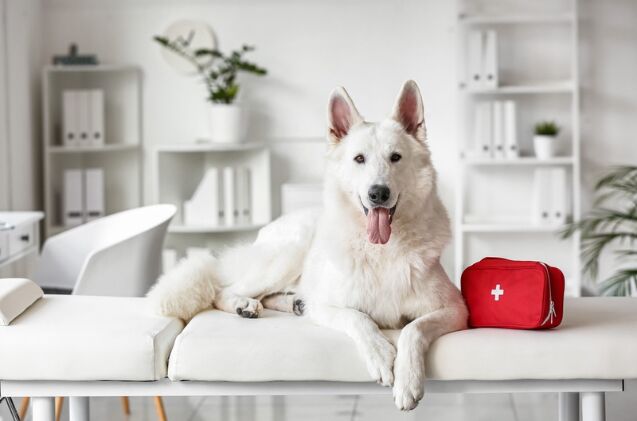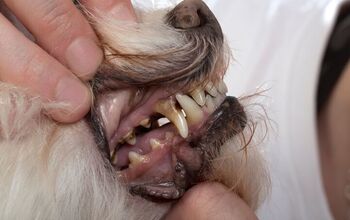How Do I Protect My Pet From Wildfire Smoke?

With wildfires burning out of control across several locations in Canada and the United States, the smoke is reaching far and wide. As a result, many cities and townships have issued air quality warnings encouraging people to stay indoors, keep their windows closed, and avoid outdoor-heavy activities.
But what about our pets? Are our pets also susceptible to poor air quality?
Is Wildfire Smoke Harmful to Pets?
The short answer is YES! Like us, our pets can experience the negative effects of poor air quality from pollution or wildfire smoke. For some, this is just an uncomfortable or unpleasant experience. It can irritate their eyes and respiratory tract even with minimal exposure. However, it can be much more severe for those with pre-existing medical conditions, potentially causing drastic side effects.
Signs of Smoke Irritation
While we would love to say that you should just keep your pets safely indoors anytime the air quality is questionable, this isn’t always possible. For example, dogs still need to go to the bathroom. As a responsible pet parent, the best thing you can do is keep time outdoors limited and watch closely for any signs of trouble.
Signs that your pet may be experiencing difficulties from smoke irritation include:
- Red, watery, or irritated eyes
- Nasal discharge
- Coughing
- Gagging
- Difficult breathing (including rapid breathing, more noise when breathing, or open-mouthed breathing)
- Pawing at their face
- Inflammation of the throat or mouth
- Reluctance to eat or drink
- Stumbling or uneven gait
- Disorientation
- Weakness or fatigue
If you notice any of these signs, contact your veterinarian as soon as possible. While they may be nothing more than a sign of discomfort, it’s always better to address potential problems before they escalate to something more serious.
Pay extra careful attention if you have a pet with underlying medical conditions like asthma or a heart condition that could increase their risk of trouble. Brachycephalic pets are also more likely to experience problems.
4 Tips to Protect Your Pet from Wildlife Smoke
Limit Any Time Spent Outdoors
First and foremost, you want to limit time spent outdoors exposed to air pollution. This step is easy if your pet is a bird, pocket pet, reptile, or indoor cat. However, it may not be for those of us that share our hearts (and our homes) with a canine friend. Keep bathroom breaks short, minimizing their time outside as much as possible. If you have a dog previously trained to use pee pads or other indoor potty solutions, this is a great time to take advantage of that.
One great option for those particularly worried about the outdoor air quality is to set up a small kiddy pool or plastic container, line the bottom with puppy pee pads or newspaper, and then place an artificial grass mat on top. This is similar enough to being outdoors that most dogs can adjust to it, even if they have always done their business outdoors previously.
Avoid Outdoor Exercise
When you go outside with your dog for bathroom breaks, stick to a very low-key, laid-back walk around the yard. Avoid anything excessive in terms of physical activity, like long walks, hikes, running/jogging, or playing outdoors. If you have a high-energy pet that needs a positive outlet for their pent-up energy, consider offering mental exercise and enrichment opportunities. Mental stimulation is just as effective (if not more effective) at wearing out our pets.
Some great products to consider include:
- Food puzzles
- Snuffle mats
- Lick mats
- Interactive toys
Contrary to popular belief, these enrichment opportunities aren’t exclusive to dogs! Many pet companies are starting to market mental enrichment for a wide variety of pets, including foraging toys for rabbits, lick mats designed for cats, and more.
Our cats regularly get their favorite creamy treats spread on a LickiMat to help engage their minds and provide additional enrichment in their lives both at home and when we’re on the go. As a bonus, experts have found that licking, as a pet would with a lick mat, effectively reduces stress and anxiety. If your pet is struggling with being kept indoors during this time, it can play a key role in helping them to mentally handle the change in their usual routine.
Keep Windows and Doors Closed
Regardless of how stuffy your home or apartment may feel, keep all windows and doors leading outside closed to keep the polluted air out. If you are in an older home where you regularly experience a draft, which is especially common along the bottom of doorways, consider rolling up a towel and using it to block any air movement.
Use an Air Purifier to Improve Indoor Air Quality
You can improve the quality of the air inside your home with the help of an air purifier. Any time you open the door to go outside, such as when taking your dog out to the bathroom or leaving the house to head to work, you are allowing those pollutants indoors. While many AC units have built-in filters, they often aren’t enough to fully address the problem.
Instead, look for a quality air purifier with HEPA filtration to remove more airborne contaminants. In our home, we use a Levoit Air Purifier in each of the main rooms of our house, including the living room, kitchen/dining area, and bedroom. Not only do they effectively remove outside contaminants like the particles carried in wildfire smoke, but they also help to address common indoor irritants that come with having pets, such as dust and dander.
Are You Prepared for an Evacuation?
While you may not live close enough to the fires to worry about being evacuated, this situation is a good reminder that we should always be prepared for the unknown. Are you prepared to evacuate in a hurry in an emergency? Some examples of reasons for an evacuation, depending on where you live, include wildfires, tornadoes, earthquakes, or hurricanes.
Pack a pet evacuation kit or “bug-out bag” with all the essential supplies you need. Preparing this now will help reduce the stress and prevent you from forgetting something important.
To begin, select an easy-to-carry bag or container. If possible, choose something waterproof. If that isn’t possible, you can use Ziplock bags and dry bags to hold any gear inside that needs to be protected. In this bag, you want to include the following:
- Enough food and water for all pets for a 7-to-10-day window
- Any medication your pet may be on
- A copy of your pet’s veterinary records and proof of ownership/identification
- Recent photos of your pet
- An emergency contact list including your veterinarian and nearby pet emergency clinics
- A fully stocked first aid kit
- Any additional sanitary supplies your pet may use (diapers, pee pads, grooming wipes, etc.)
- An extra collar/harness and leash with up-to-date ID tags
- Flashlight and extra batteries
- Comfort items for your pet, such as a recognizable blanket or favorite toy
If you use a carrier when traveling with your pet, leave it with the evacuation kit near your main exit. This makes it easy to grab and go should the situation arise. You may never need to use this – that would be the best-case scenario! But if something does happen, it’s always better to be prepared.

Britt Kascjak is a proud pet mom, sharing her heart (and her home) with her “pack” which includes her husband John, their 2 dogs – Lucifer and Willow – and their 2 cats – Pippen and Jinx. She has been active in the animal rescue community for over 15 years, volunteering, fostering and advocating for organizations across Canada and the US. In her free time, she enjoys traveling around the country camping, hiking, and canoeing with her pets.
More by Britt
























